For many years, STH readers have had a simple question: “where is the 5GbE?” We have seen 10GbE switches in the forms of SFP+ and 10Gbase-T variants as well as 2.5GbE over the past few years, but 5GbE has been noticeably absent. Or at least, absent minus being an additional speed on ports that are 1GbE/ 2.5GbE/ 5GbE/ 10GbE. Still, with the Realtek RTL8126 chipset, we are now getting cheap 5GbE NICs that should start to help adoption. Our first RTL8126 adapter is the IOCrest 5GbE PCIe adapter.
IOCrest 5GbE PCIe Adapter
Looking at the card, it is very small with a PCIe x1 interface.
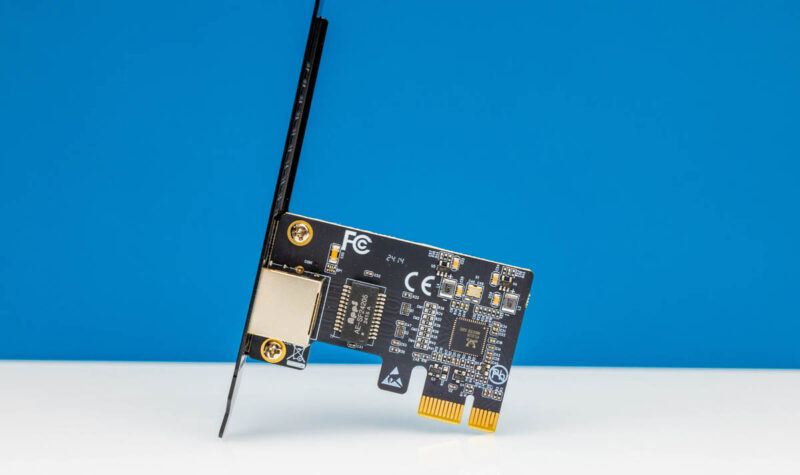
Here is a close up of the card’s front without zooming out for the bracket.
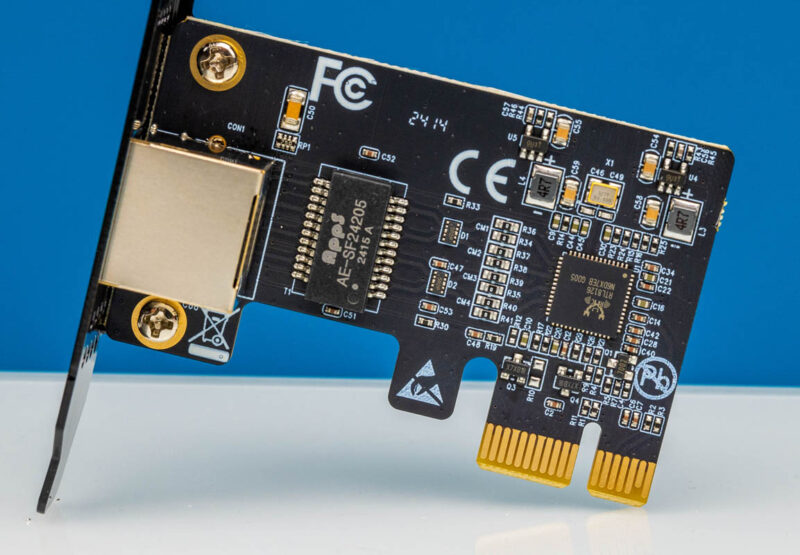
Turning it around, we can see the Realtek RTL8126 chip.
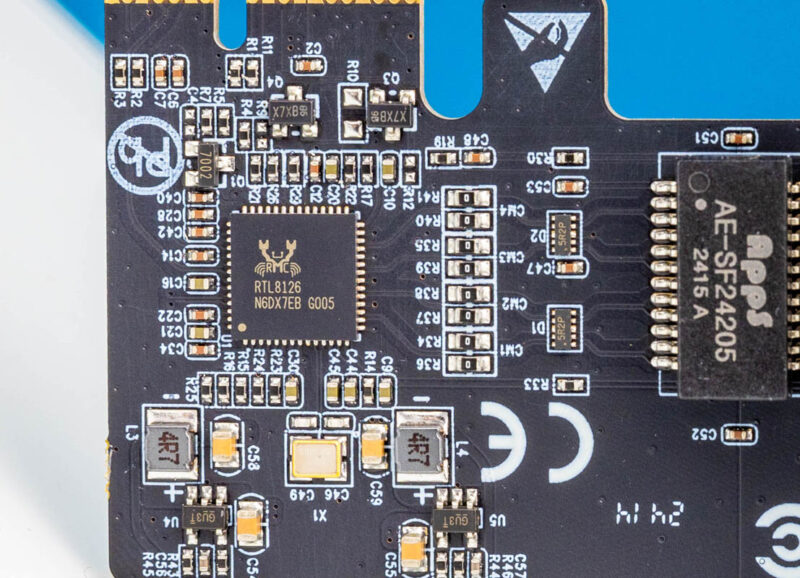
Here is the back of the card which is small enough that a large portion of the back is covered in stickers.
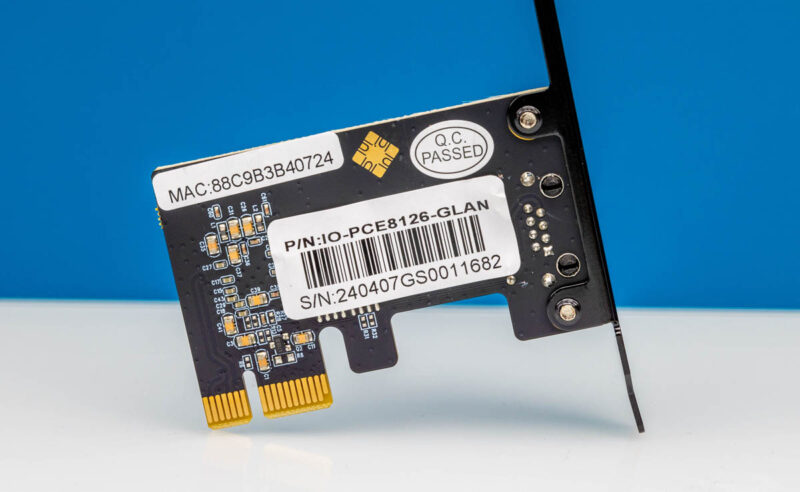
Here is the full-height bracket and the port.
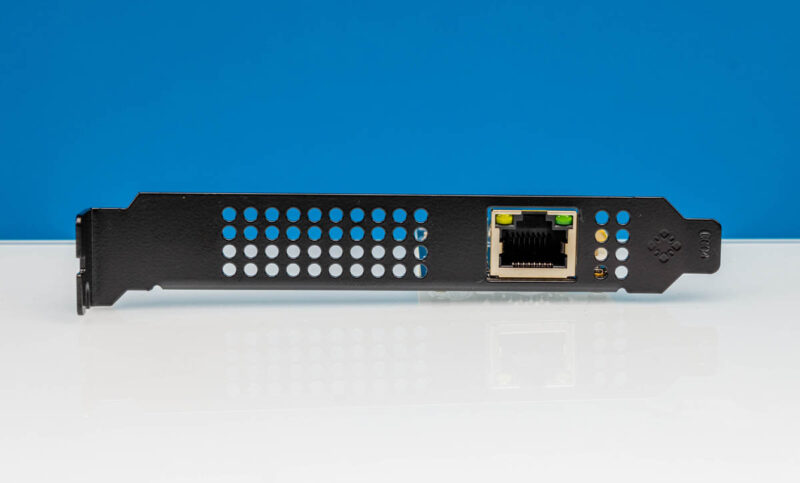
The card also comes with a low profile bracket.
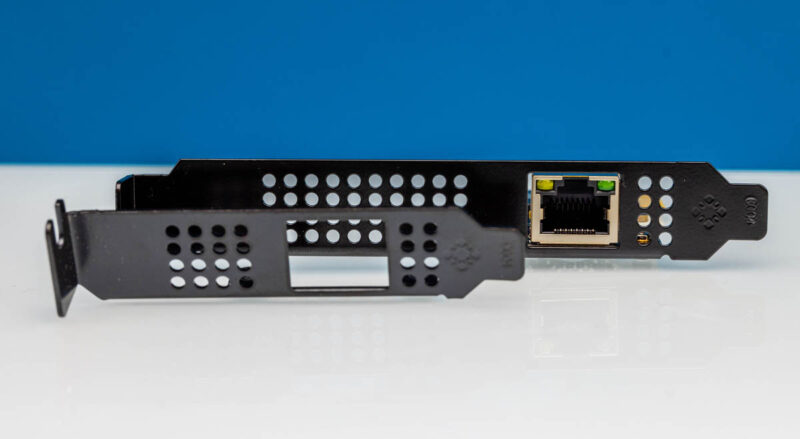
Hardware is great, but let us take a look at setting up the card.
Getting the Realtek RTL8126 to Work
For many OSes, including Windows 11, the NIC will need drivers that are not included with the base OS installation. To do that, you can go to the Realtek page, which is here at the time of this review.
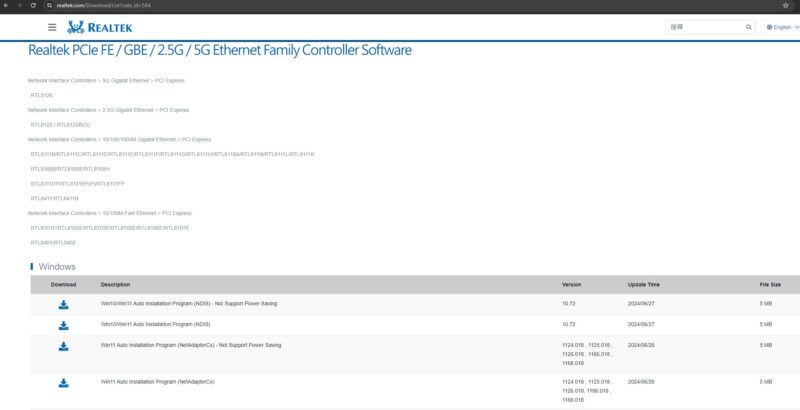
After installing the drivers, the system will recognize the Realtek PCIe 5GbE Family Controller.
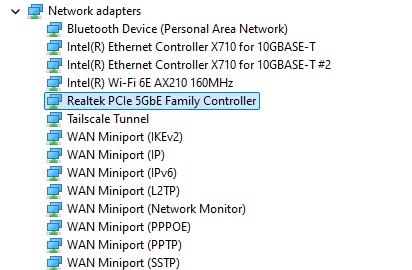
From there, we can see that we have now linked up at 5000Mbps speeds through a switch.
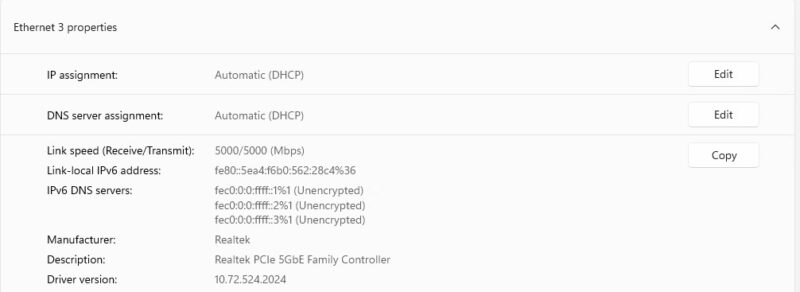
For those wondering, this is connected to the NICGIGA S100-0800T we reviewed, which is a cheap 8-port unmanaged 10Gbase-T switch. It is also a switch that can support 5GbE speeds.
IOCrest 5GbE PCIe Performance
In terms of performance, this card was certainly a lot faster than a 2.5GbE card:
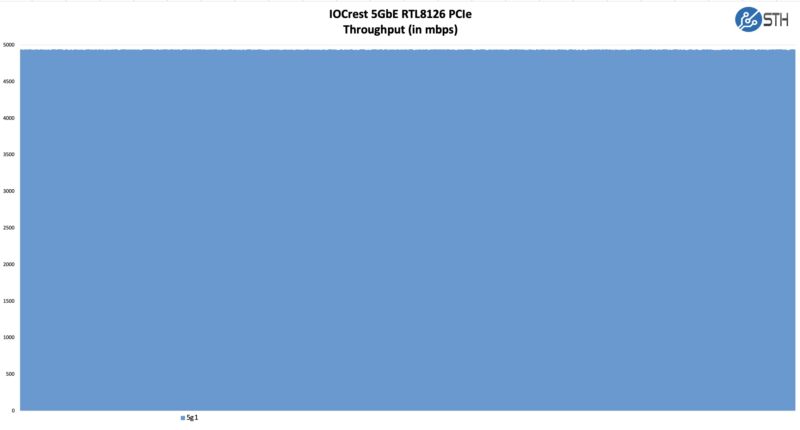
We ran this card for 72 hours at 100% load and it did not falter. Our sense is that is probably more than most users will use a 5GbE adapter, but we were interested to see what would happen.
Final Words
One of the big challenges with a card like this is that there simply are not switches for it. 2.5GbE switches are cheap, and we have a big 2.5GbE Switch Buyer’s Guide. We also have a Cheap 10GbE Switch Buyer’s Guide. 5GbE switches are hard to find. As a result, it can also be harder to recommend 5GbE cards instead of just getting 10GbE, even though the power for the card we saw is usually under 3W or less than a 10GbE card.
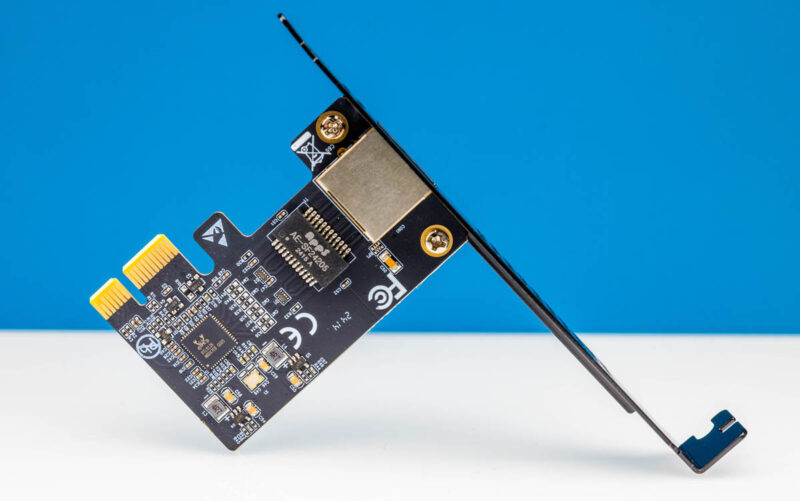
The real reason to look at this is pricing. We paid around $18 per card for these. If you just had two PCs and wanted a cheap direct connect network over Cat 5e cabling, then this is fairly hard to beat. It is twice the performance of a 2.5GbE adapter at only slightly more cost. It can also operate at 2.5GbE speeds, making it perhaps more future-proof, at the cost of having to manually install drivers. It is also still far less than 10Gbase-T adapters. At under $20, it is hard to beat as a cheap connectivity solution.
Where to Buy
We purchased ours off of AliExpress. Here is an affiliate link to the listing we purchased. We may earn a small commission if you order using the link.
- IOCrest 5GbE PCIe (AliExpress Affiliate Link)

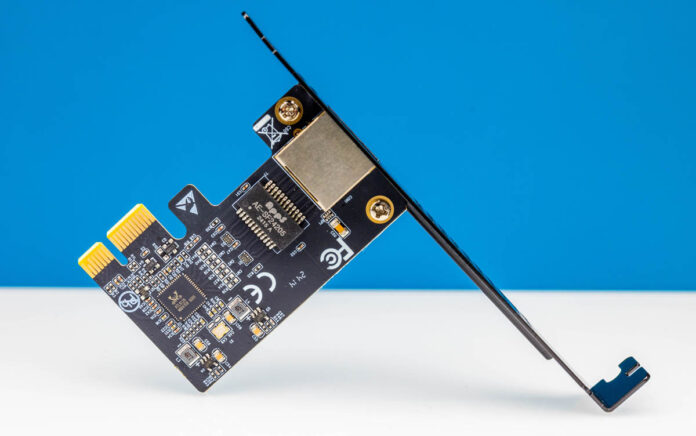
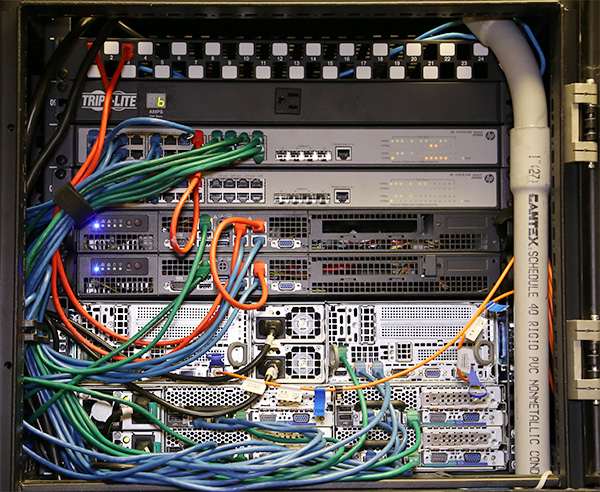
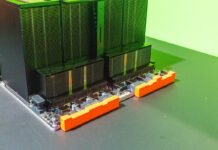
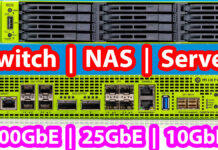
Yes, but one rarely connect anything Ethernet without a switch. And there are no 5GB Eth switches, at least no sanely priced, let alone cheap switches.
Also, 10 Gb Eth NICs tend to have far more offload capabilities, RDMA etc.
And 10G version is pinnacle of what RJ-45 can do.
Once one factors all that in, it makes no sense in going for anything less than 10G NICs.
They are to become ubiquous for legacy networking that is to cover anything from 100M to 100G, so why waste $$$ on anything else ?
Once one factors all that in, paying extra $40 for the cheap 10G Aqua-something NIC seems like the best option
@NotME I could see a use for this but it is quite limited. Consumer motherboards are rather constrained for PCIE lanes. My gaming machine is b550. GPU takes up 16, 2 m.2 drives take up 4 each. that leaves me with a single x1 slot. This would give me a boost from the onboard 2.5 if I wanted it.
Realtek has a family of 5GbE switch SoCs. 5GbE switches will be coming out over the next couple of months in the same fashion as 2.5GbE switches exist now based on their 2.5GbE switch SoCs.
@NotME I’m not sure whether any of the OEMs will end up biting; but this chip seems potentially more interesting in the case of laptops and USFFs: those are where power and price are extremely pressing considerations; and where your options for upgrading a NIC tend to be either ‘really expensive thunderbolt’ or ‘lousy’.
If I’m already buying a PCIe add-in card going for a 5GbE one seems like a false economy; but if Realtek can make it so that the marginal cost of going from a 1GbE or 2.5GbE to a 5GbE for the built-in NIC that you have no ability to change to a relatively tiny bump in BoM cost and power draw you are a lot more likely to actually be able to get things like laptops that will get significantly more speed from a 10GbE switch with multiple speed support.
I ordered a few of these in the m2 2280 form factor because they fit nicely into an HP 800 G6+ mini and still leave an NVMe slot to boot from and a SATA connection for a large storage drive. The 10g 2280 cards have heat sinks that would block the SATA tray and cost closer $100 vs $18. Really wish there was a smaller option that fit into the wifi slot but I’ll have to wait a few more years I suppose. Had to 3d print an adapter for the 2nd flex io port, but its nice to have 3 NICs in my mini pcs.
What the world wants to know is: Does it work out of the box with Proxmox?
@Kingneutron
Not out-of-the-box, at least in latest 6.8.x kernels in Proxmox 8. There are some incompatibilities, but disabling power management features via kernel cmdline makes it work: r8126.aspm=0 r8126.eee_enable=0 pcie_aspm=off
I recently added 10G to my rack, mostly sfp, and wanted to add my desktop to the party. It has 2.5GbE integrated, and 1 available 1x PCIe 4.0 slot (close-ended). The other slots are covered by the GPU.
I was more than a little surprised with the lack of 1x PCIe NICs. I was unable to find any 1x despite 4.0 having the bandwidth for 10G. Best I could find was a 4x physical, 1x electrical, that should work fine if my 1x slot was open-ended. It’s not and I’m not planning on whipping out the dremmel for it. I ended up just using the 2.5GbE integrated. This card seems like it would bring me up to 5GbE. I may pick one up.
“The real reason to look at this is pricing. We paid around $18 per card for these. If you just had two PCs and wanted a cheap direct connect network over Cat 5e cabling, then this is fairly hard to beat.”
Is it?
I guess if you absolutely positively MUST use Cat5e.
Otherwise?
You can get 40Gb Connectx-3 cards for $10-$15 each and a DAC(or cheap optics and fiber)
great (and only) advantage is the connection pcie x1… might be the only way to improve an old machine
Does this support RSS in windows? Seems intel has pulled driver support for RSS in windows i225/i226 nics because they cant seem to make it work with ecores i think. Am i wrong?